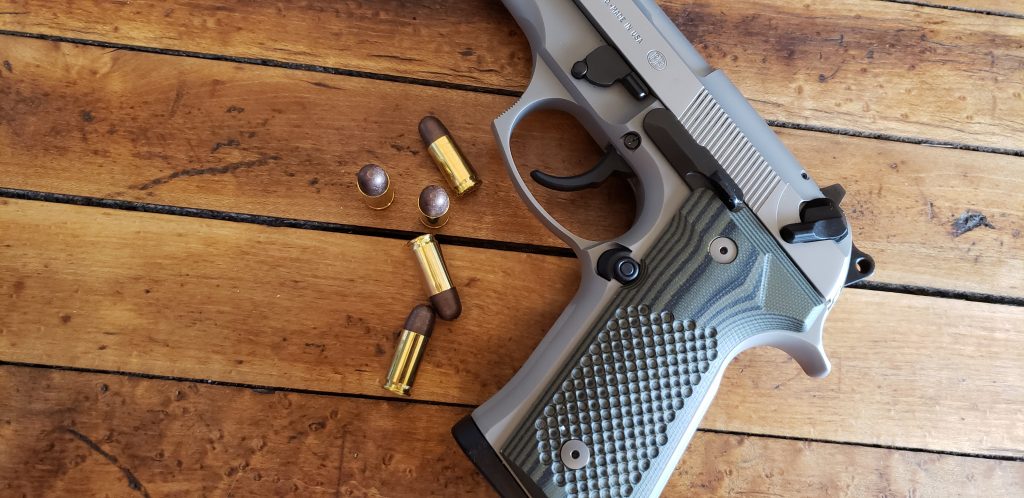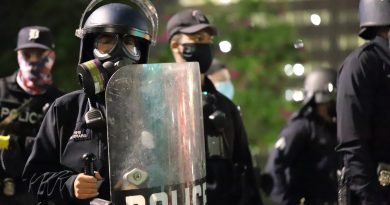Lethal Projectiles: Car Culture, Gun Violence, and Police Shootings
Content warning: This article contains numerous references to police shootings, gun deaths, and traffic deaths.
As the COVID19 pandemic winds down– in most of the US, at least, maybe- reopenings mean more people congregated in the same place. In this country, this apparently means more mass shootings– a few this weekend alone. And in Chicago and Brooklyn Center, Minnesota, police are again tear gassing protesters and roughing up journalists over police shootings of unarmed civilians like 20-year-old Daunte Wright and teenager Adam Toledo. One tweet drew an unusual parallel between police departments and road departments as “two core public safety functions” of which most governments have “completely lost” control. “Who governs these agencies?” Matthew Lewis asks in the tweet. “Apparently, no one.” It’s an interesting point in a society that spends an unfathomable amount of money settling lawsuits over police brutality– and on cars and highways.

Democracy vs. the Lethal Projectiles
Lewis is the Director of Communications for California YIMBY, an organization that advocates denser development in the largely suburban Golden State. California’s spending on transit has failed to keep pace with the growth of its spending on highways, with perhaps the notable exception of the massively over-budget high-speed rail project (which is somewhere between transformative and a complete boondoggle). California, for its part, funds most of its highway spending from user fees, which is unusual. But it has still posted double-digit-percentage, year-over-year increases in road spending in recent years. The state’s insatiable addiction to the automobile has both arguably birthed the new era of the electric car by way of Tesla– and continued to hinder the state’s ambitious goals for decarbonization.
Indeed, the addiction to the automobile, and the idea that one more lane mile will solve the problem, is, quite literally, killing us. These agencies, who have very little accountability to the public, simply quest after an improved “level-of-service” that is paramount. And, they believe, this can all be attained by adding more lanes! More traffic flow! It is a universe preoccupied with rigid, technical solutions in a desert of social or cultural understanding.
One rural Michigan planner lamented to me that the Michigan Department of Transportation was “an engineering agency.” She complained that the state didn’t even fund credential maintenance for city planners, only for engineers. I’ve raised similar issues in pointing out how our DOT likes to build roads, and views alternatives to new lane-miles as sort of a fanciful afterthought. This is true in many states, whether deep-blue, car-obsessed, smog-choked California or the big-hat-wearing Lone Star State.
Murder Rates vs. Democracy?
But there’s a particularly odious, though fascinating, correlation of note. In general, the deepest-red states have both the highest rates of gun violence and the highest rates of traffic violence. Consider these top states for gun deaths per capita (100,000 population per year). I’ve gone down to #25 to highlight that only two or three are blue states.
- Alaska – 24.5.
- Alabama – 22.9.
- Montana – 22.5.
- Louisiana – 21.7.
- Mississippi – 21.5.
- Missouri – 21.5.
- Arkansas – 20.3.
- Wyoming – 18.8.
- West Virginia – 18.6.
- New Mexico – 18.5.
- Tennessee – 18.4.
- South Carolina – 17.7.
- Oklahoma – 17.2.
- Nevada – 16.7.
- Idaho – 16.4.
- Kentucky – 16.2.
- Kansas – 16.
- Arizona – 15.8.
- Georgia – 15.4.
- Indiana – 15.3.
- Utah – 14.
- North Carolina – 13.7.
- Ohio – 13.7.
- Colorado – 13.4.
- North Dakota – 13.2.
With the exception of perhaps New Mexico, the rest of these states are generally pretty deep red. These μολὼν λαβέ Types will argue that these numbers conflate gun suicides with murders. The emphasis, they say, should be on mental health that their party aggressively and categorically defunded! It’s true that these numbers are combined, but we also know that, irrespective of your mental state, having a gun in your home is irrefutably correlated to a higher risk of you being killed by that gun, whether by yourself or someone else.
Now, consider these data from IIHS that show the states leading in traffic violence. I’ve expanded the list to show how far down we have to go to find a second blue state (Delaware).
- Wyoming – 25.4
- Mississippi – 21.6
- New Mexico – 20.2
- South Carolina – 19.4.
- Alabama – 19.
- Montana – 17.2.
- Arkansas – 16.7.
- Tennessee – 16.6.
- Kentucky – 16.4.
- Oklahoma – 16.2.
- Louisiana – 15.6.
- Florida – 14.8.
- West Virginia – 14.5.
- Missouri – 14.3.
- Kansas – 14.1.
- Georgia – 14.0.
- Delaware – 13.6.
But wait– police ≠ guns? “What about Chicago?”
The “what about Chicago” trope is a common refrain among conservatives who point out that Chicago has restrictive gun laws but also a high rate of gun violence. Gotcha, libs! These Dan Bongino types don’t seem to understand the fact that Chicago criminals enjoy the ability to procure guns from extremely lax regulatory regimes in Wisconsin and Indiana. Not to mention a bunch of marginal gun shops in suburban Chicago that are responsible for a double-digit percentage of all illegal guns confiscated on the streets of the Windy City.
But the question of correlating police to guns? Most of these police shootings are urban police shootings. Most of these gun deaths and traffic deaths are rural deaths. How do we reconcile these two?
It appears most cities/states in U.S. have completely lost democratic control of two core public safety functions: Policing, and highway/road departments.
— (((Matthew Lewis))) fourplexes in yer parking (@mateosfo) April 18, 2021
Who governs these agencies? Apparently, no one. They are nations unto themselves, fully funded by us, but not accountable.
The Paradoxes of Liberal Capitalism
This is the profound irony here. It’s also something liberals desperately don’t want to talk about. In liberal capitalism in a state with a weak safety net, massive engines of economic growth depend upon the prevalence of an affordable underclass, right? You know, Fred Fredersen needs to be able to feed the workers to Moloch, or whatever? Poverty breeds desperation, which often breeds criminal activity as essentially the human toll of market failure.
This is why New York leads the world variously in innovation, billionaires per capita, police shooting people and beating the shit out of protesters to boot, and wealth disparity. Oh, and remember those hate crimes against Asians? Violence against people of color-– sometimes even by other people of color? Why do reactionary things happen in supposedly liberal places? Or, another question: Why did the system in a supposedly progressive city fail a habitual violent offender with a history of severe mental illness? These are things we really aren’t talking about. And we’re not connecting the dots.
We see these connections in the high rates of gun violence in the poorest states in the union. We also see it in police shootings of unarmed men suspected of criminal conduct. Another tack would be to point out that most of these police shootings are by officers who don’t even live in the jurisdictions they’re policing. And this is to say nothing of the (usual) melanin disparities.
The Quest for Democratic Reform
Unfortunately, we can’t always simply “ask nicely” for these things, for the most part. Litigation is one option when mass protest fails to effect reforms like those enacted in Minneapolis. And this is especially true given how slow some reforms are. The lawsuit filed last week by the National Lawyers’ Guild in Detroit highlights the need for utterly lacking police accountability, where last year journalists (including the author) and legal observers were violently assaulted with chemical agents banned by the Geneva Convention, and where the city continues to pay out staggering sums of money in brutality settlements and operating budgets for an agency that remains largely opaque and largely undemocratic.
But there are things we can do in reforming either system as a solution to violence. One solution involves forcing a more equitable mix of funding distribution. This can begin in many cases at even an incremental level. A single percentage point could mean millions of dollars for non-motorized transportation (for DOTs)– or spending money on social programs instead of guns or military hardware.
For traffic violence: if Departments of Transportation had to spend a much higher percentage of any of their budget on non-car infrastructure, that’d be a win. Former Michigan Lieutenant Governor Brian Calley had a pretty eloquent response to that question when I asked him about it. And for police violence? We desperately need to recognize the toll COVID has taken on our nation’s mental health. We are tired. Many of us are unemployed– probably a double-digit percentage of the workforce. We need a stronger safety net. But in the meantime, all we can ask is for police to stop killing people. We can consider both traffic violence and police shootings as vital questions of public safety and of the general welfare. And we can always demand better systems and improved accountability.
MDOT did not immediately respond to a request for comment.




